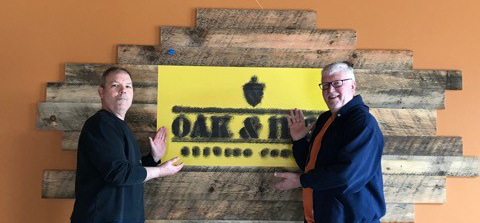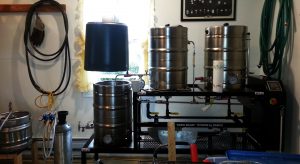Personalized M&Ms Godfather Launches Brewing Company
-
-
slice.mit.edu
Filed Under
Recommended

After retiring from Mars, Helferich decided to contribute back to the food industry and consumers “for all the support they gave us over the years.” He returned to MIT resolved to “work on my innovation and systems thinking, and also on food safety.”
At MIT Helferich studied a new hazard analysis method developed by MIT Aero/Astro Professor Nancy Leveson, called the Systems-Theoretic Accident Model and Processes (STAMP). This method considers accidents and prevention from a systems perspective and can be applied to both engineered and non-engineered systems, such as hospital and food safety. His PhD in progress, advised by Professor John Carroll ’70, concentrates on specific managerial aspects of food safety. However, he also discovered that “you can’t start a brewery and a dissertation at the same time.”
“Since brewing is a biochemical reaction, my undergraduate chemical engineering background was an excellent preparation for brewing. Everything I learned at MIT and my previous jobs helped me. Jim and I had worked together at Mars, and we understand business, quality, and technical aspects,” noted Helferich.
“It was fun to work on candy where people can understand what you do, and beer is even more interesting to people now,” said Helferich. “About 90 percent of people interested in craft beers look for a selection that maybe they wouldn’t normally find, and they want have a good time with friends while trying out the beers.” The other 10 percent, he says, “are really into the beer: the hops, yeast, preparation.”
To serve both groups, the partners brew classics such as golden ale, porter, and IPAs (India Pale Ale) on their full-scale equipment, and they use a smaller unit for specialty brews, such as an Imperial IPA. Making beer today is “a time-honored activity that’s been technologically advanced,” he said. “However, a monk from medieval times could come here and understand what we’re doing.”

Helferich mused, “At Mars I was in charge of R&D but I didn’t make or sell M&Ms. Here we do everything from making and selling the beer to cleaning the rest rooms, serving during busy periods and talking to customers.” They also had to learn business necessities such as collecting money, charging sales tax and processing credit cards.
Given so many choices, patrons need something novel to entice them to a new brewery. “Right now sour beers are very popular, but those appeal to the 10 percent minority,” said Helferich. But tastes change over time, and he pointed out that IPAs have moved from a niche market to become Oak & Iron’s leading seller.
Because of their license, Oak & Iron can only sell what they produce in-house. “The malt travels about 20 feet to the equipment, and the beer travels 30 feet to the keg and another five feet to the glass. We watch it from beginning to end. Our customers like to see where it comes from and what happens to it. I’m really excited about providing a place for our customers to have a good time and enjoy well-made beer,” said Helferich.







